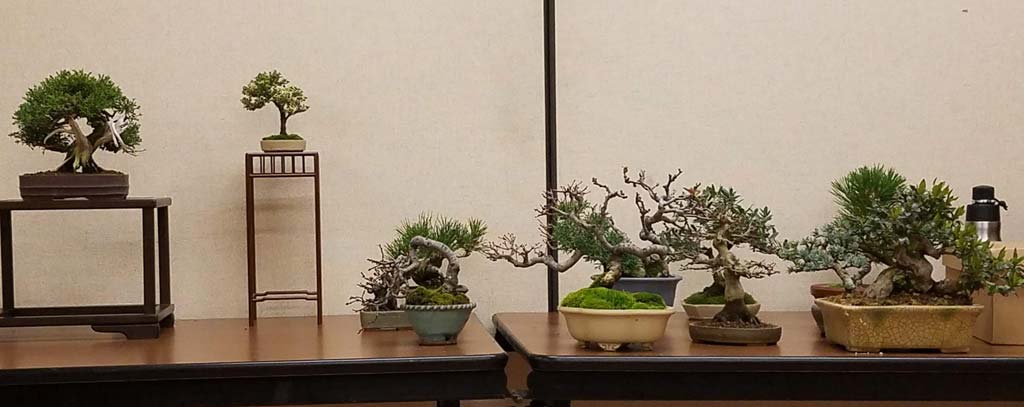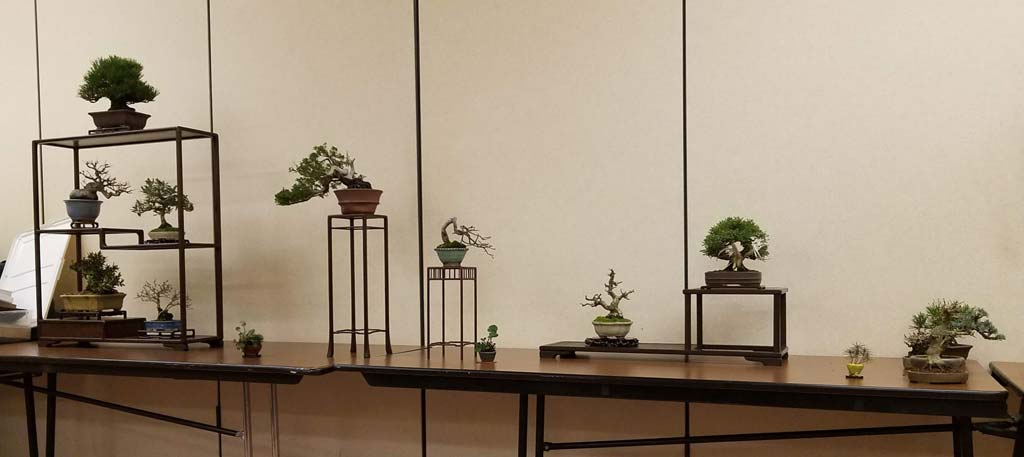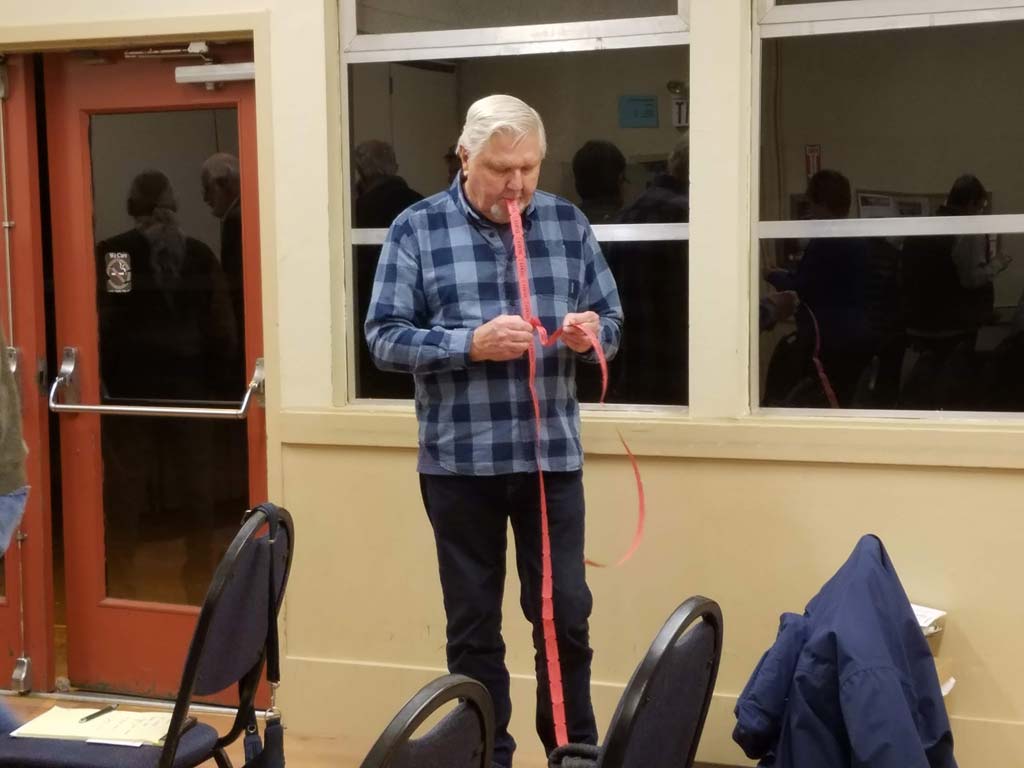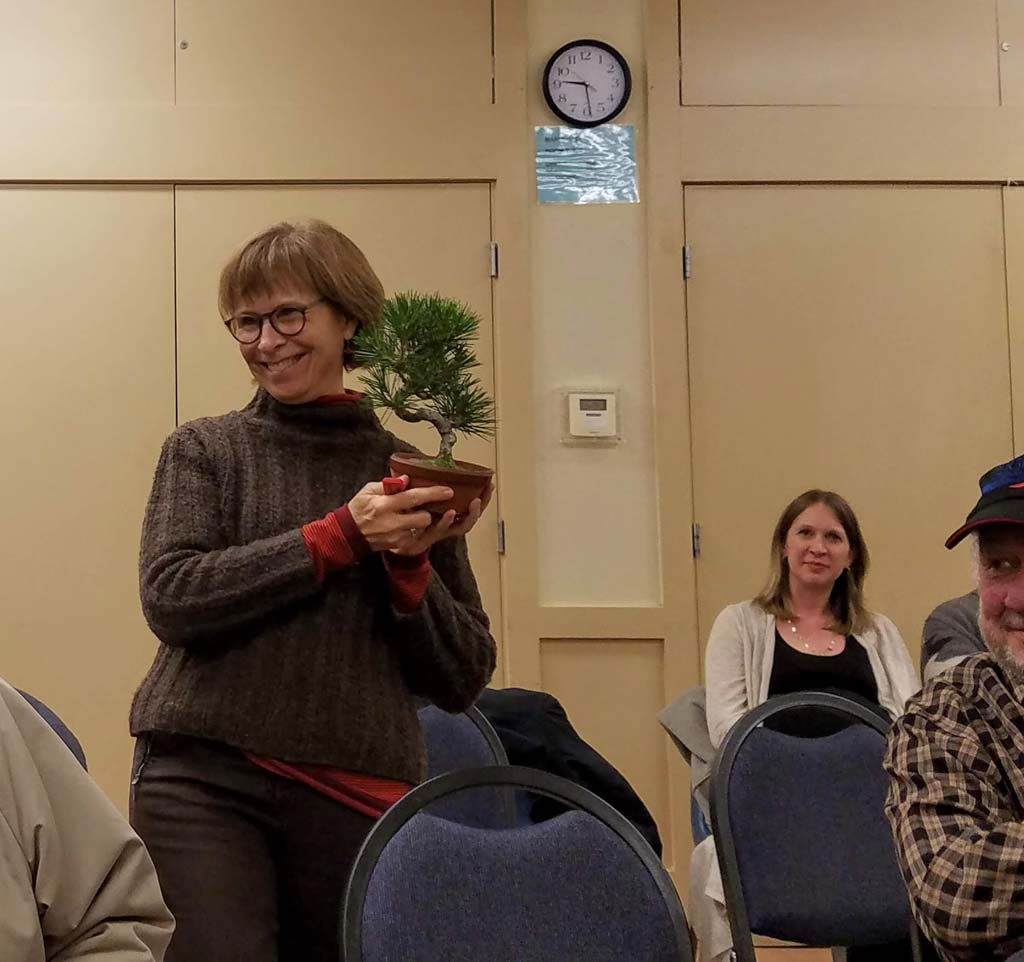Jonas Dupuich, host of the popular blog “Bonsai Tonight” (www.bonsaitonight.com), and now author of the book “The Little Book of Bonsai,” joined us in January to give us some guidelines on how to admire and display shohin bonsai, which are generally considered any bonsai ten inches or shorter. The maximum height given by the precise Japanese definition is 25 cm.
After giving us a sneak preview of his new book, “The Little Book of Bonsai,” and generating some more buzz regarding the then-upcoming BABA show, Jonas fired up his projector and started us off with some slides from the 2020 Gafu Ten Shohin Exhibition in Japan. He wanted to show us some high-end, very traditional shohin display examples before moving on to coaching us in assembling our own displays, as a group, from the many trees and stands he and club members had gathered that night.
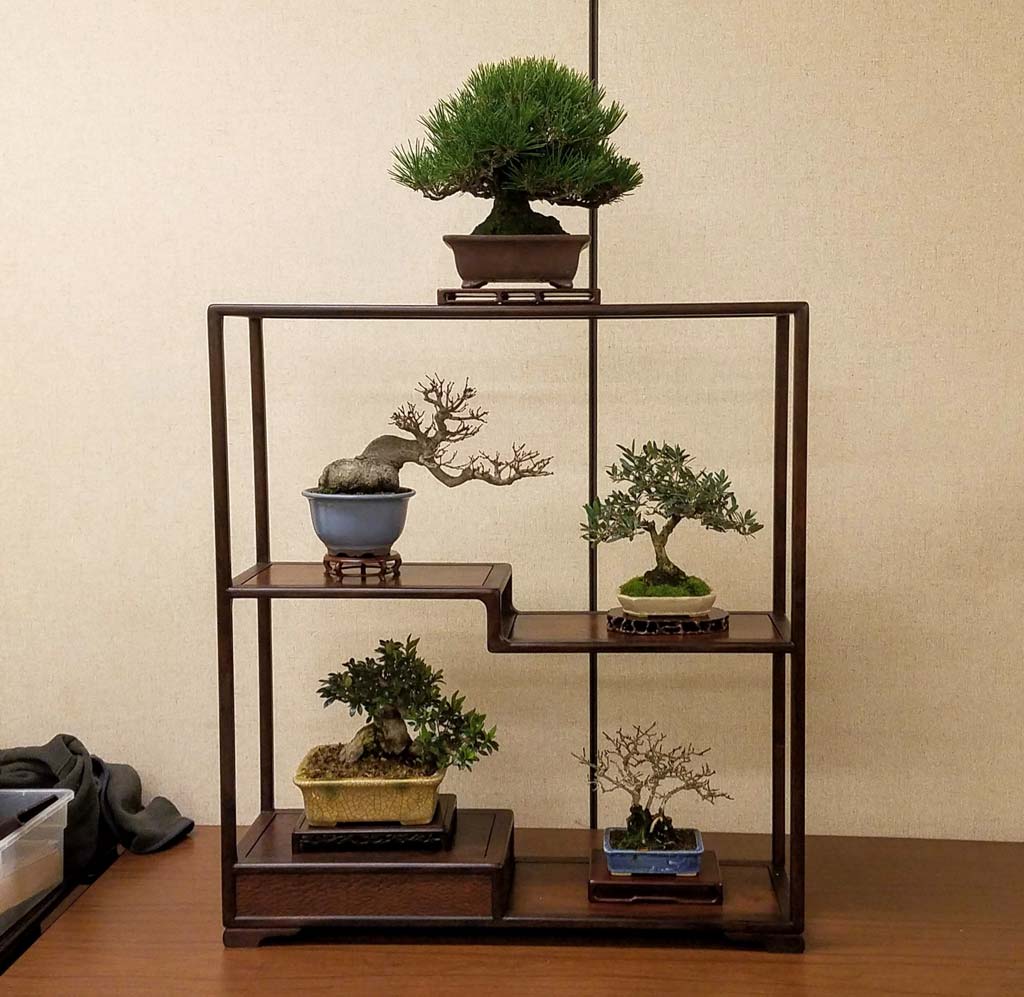
At some point after the first few slides, as part of a discussion of how difficult it is to get truly dramatic trees at such small scales, Jonas turned to one of the trees he brought, a 26-year-old, picture-perfect black pine with a nice fat trunk, though he admitted it’s not quite small enough to call a shohin. He said it’s one of the oldest pines he’s created in his decades of working with them, but that if he did it now, he could do the same thing in 12 years.
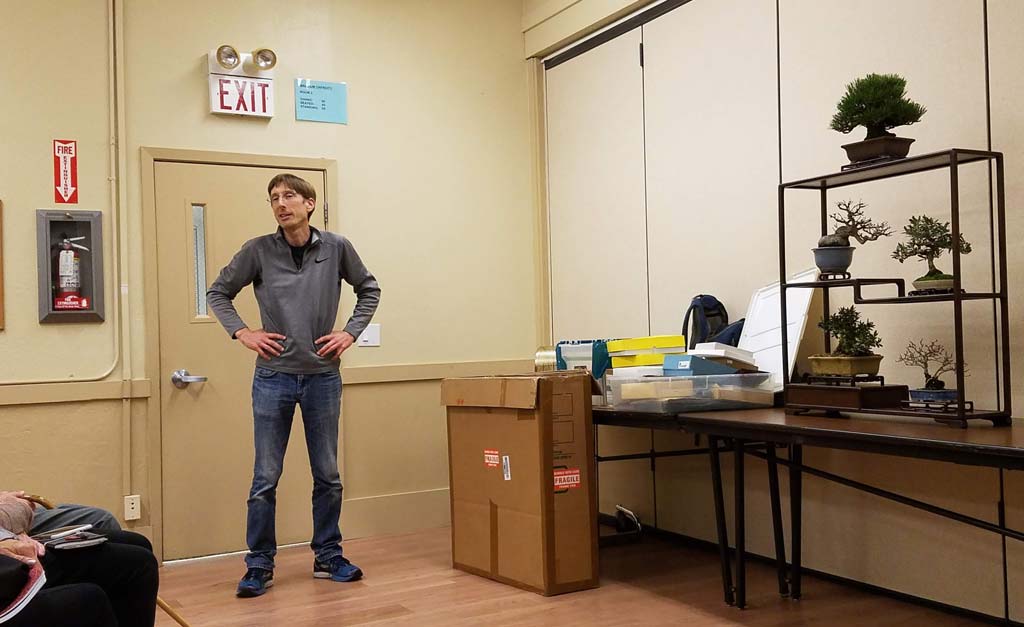
Starting with a simple display from the Gafu Ten exhibition, with a tree on each side, a scroll in the middle, and an accent plant, Jonas explained the first of the three most important features in any good shohin display: contrast. The other important features are directionality and balance. Jonas pointed out how the two trees in the simple display contrasted with one another, but were balanced by the other elements. Directionality is somewhat crude in simpler displays, but Jonas went on to show many more examples illustrating that feature. The most basic directionality rule the slides revealed is that trees on the right side of a display need to have any movement implied by their limbs pointing predominantly to the left, and conversely for trees on the left side, so as to keep the viewer’s eyes moving back toward center.
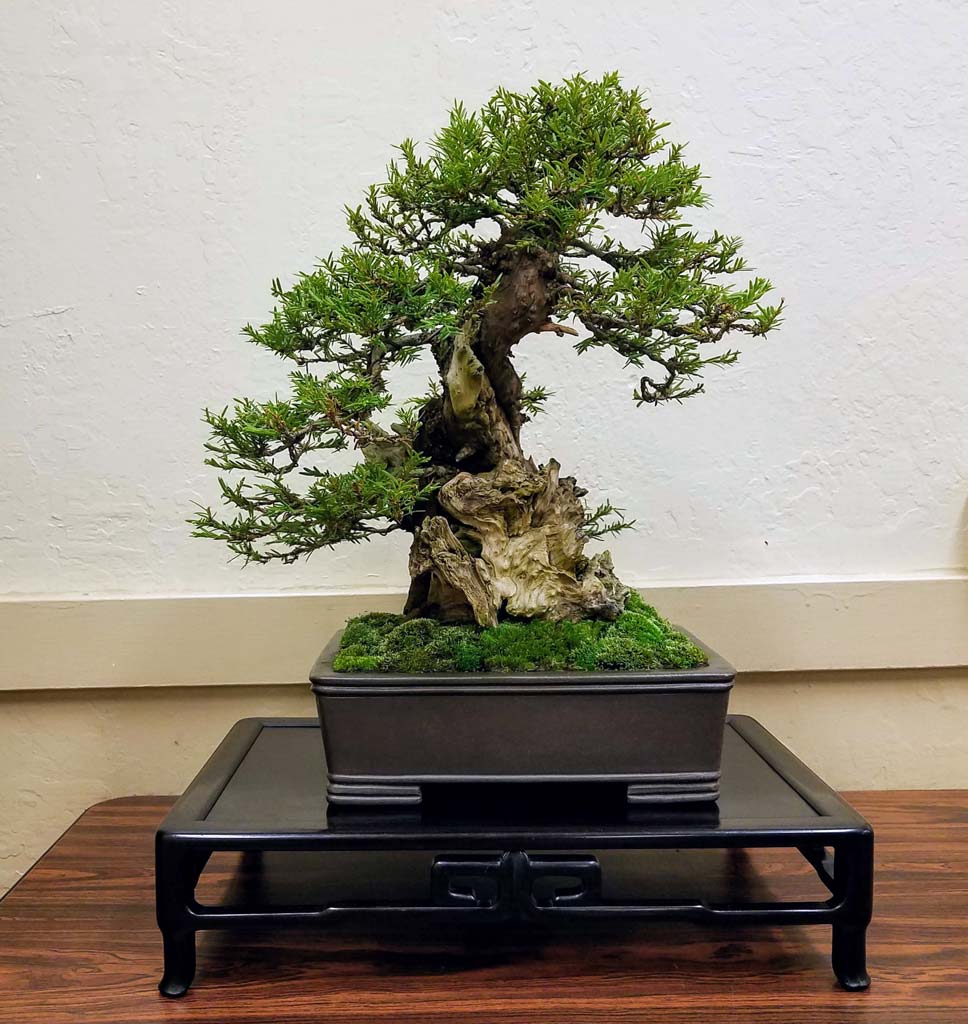
Before proceeding to more slides illustrating further shohin conventions, Jonas showed a slide of a bunjin-style (also called literati) camellia. Clearly more than ten inches tall, the camellia demonstrated that there are exceptions to all category conventions, especially when it comes to bunjin, a style that intentionally bucks traditions to create extreme looks.
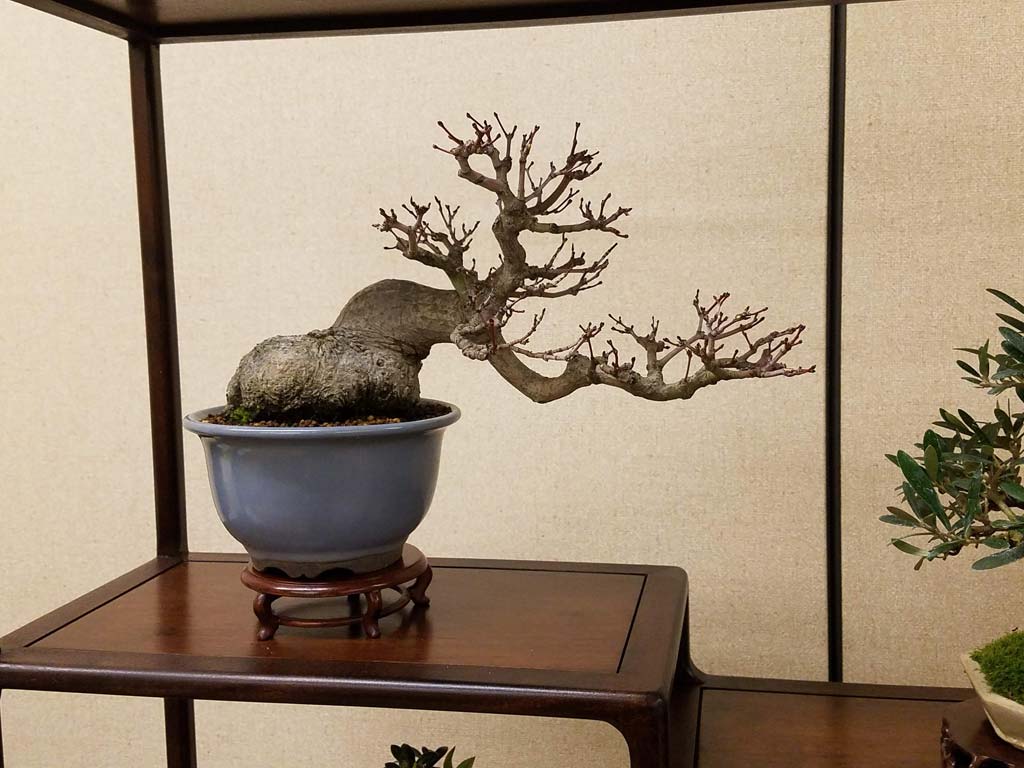
At most shohin shows, but particularly in Japan, there are fairly strict conventions around the sizes of the boxes that contain the little trees. There tend to be three sizes from which the artists must choose, and alternate sizes have been frowned upon long enough that nobody strays from the assigned box sizes. This type of convention no doubt arose because a more freestyle approach would add a randomness that would destroy the neat, curated feel of the exhibit.
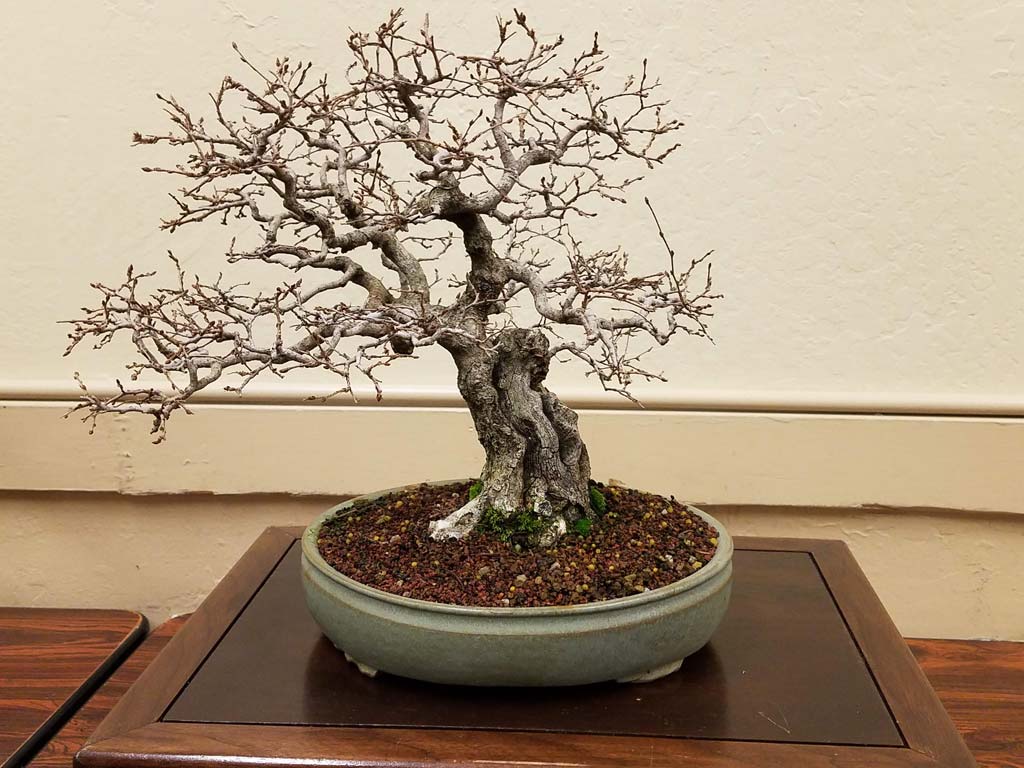
Another shohin display convention dictates that the topmost tree should be a black pine. This is to suggest a high mountain area, even though black pines are, ironically, coastal trees. The full list of conventions is too long for Jonas to have likely covered them all, let alone listing them all here, but among them are pot color and glazed-not-glazed combination standards, shared-height preventions (basically, nothing should be at the same height as anything else), and a general thematic guideline that the various trees should represent the different seasons.

Though Jonas and some of our own club members clearly enjoy, and excel at, creating shohin masterpieces, it’s certainly one of the most difficult forms of bonsai, and anyone wanting to reach the level of displaying at a show on their own needs to have a lot of small trees and display stands. But Jonas was there to encourage anyone wanting to try it out, and to remind us that we have a club to support our courage. Best of all, Jonas came prepared, with the help of some of our club members, to give a taste of what it’s like to assemble a shohin display without having to collect all the necessary paraphernalia. Using the great assortment of trees, pots, and stands gathered together for the evening, Jonas took display combination suggestions from the audience for the rest of the night.
Jonas also brought a small pine with him to raffle off at the end of the night. Chris Ross won the tree and then promptly sold it to one of our newer members, Diane Matzen. Congratulations to you both!
– David Eichhorn


